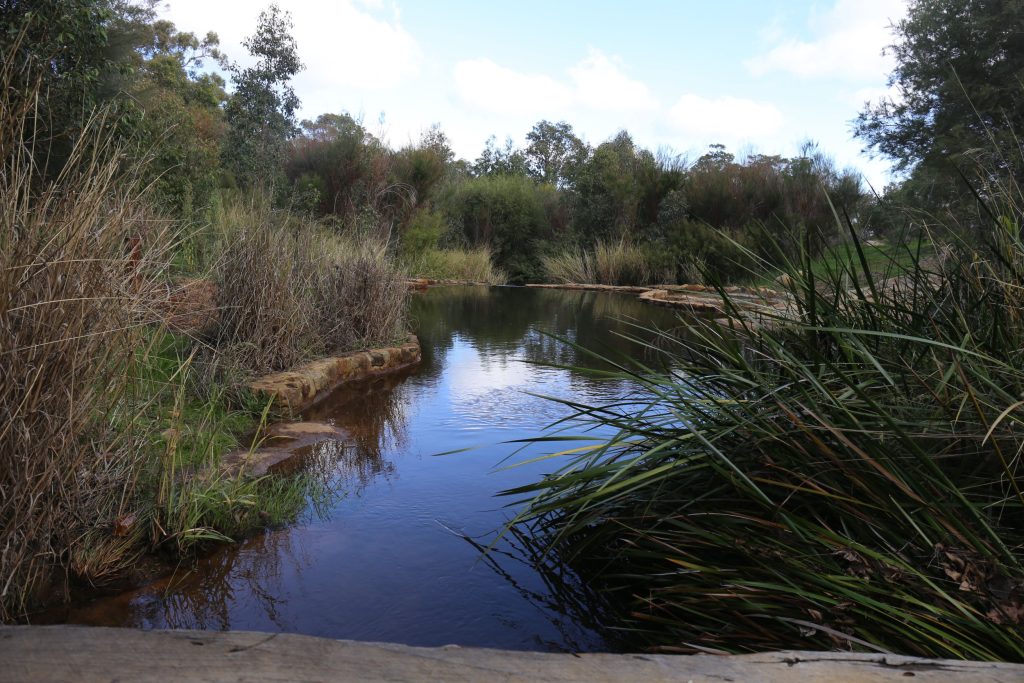Darling Range Branch 10 October 2025
Ex-President of the Friends of Upper Lesmurdie Falls, Mike Robinson, shared the history of conservation efforts at Upper Lesmurdie Falls, where volunteers, contractors, and community partners—including Rotary and the City of Kalamunda—have worked tirelessly to restore the creek corridor and surrounding bushland.
2013–2015: Early Works and Erosion Control
Prompted by Parks and Wildlife WA, Mike conducted an initial assessment identifying key concerns: unusual structures, a weir, sloping banks, and remnants of old dwellings. The creek faced siltation and erosion from winter rains. Volunteers installed Wandoo timber rails to guide foot traffic and protect fragile zones. African feather grass was targeted first, followed by Watsonia, woody weeds, blackberry thickets, and feral fish. Contractors deepened the creek line to slow water flow, added rockwork and sedges to reduce erosion, and created water basins with reeds to filter runoff and toxins.
2015: Fire, Funding, and Infrastructure
Controlled burns were conducted to manage fuel loads, though 33 mature wandoos were lost. Increased visitation prompted the need for better parking. The Friends secured $200,000 in funding from Rotary, the Shire, and local donors.
2016–2019: Trails, Planting, and Cultural Connections
The group embraced cultural storytelling and historical research. The “Up the Creek” trail—1.6 km through restored habitat—was launched, featuring Peter Goodall-designed seats and bridges. Elder Neville Collard shared cultural knowledge for the interpretation trail. The Men’s Shed greenhouses produced over 4,000 native plants, supporting extensive revegetation. Climbing frames and shade structures were added for children, with timber chosen for its natural aesthetic despite expected wear.
2019: Aquatic Monitoring and Weed Removal
Murdoch University introduced native fish cobbler and assessed aquatic health. Eastern States fish were removed via electrofishing. Water testing revealed high iron and nitrogen levels. Turtles were spotted as signs of ecological resilience. Woody weeds along Nelson Crescent were cleared using winches and heavy equipment.
2022–Present: Dieback, Dogs, and Dedication
Dieback was detected in the area and the surrounding National Park. Sniffer dogs now assist in mapping affected zones. Eastern States wattles were removed to reduce erosion and instability. A section of the interpretive trail is being replanted with almond trees to provide food for cockatoos. Weekly weeding and planting sessions continue to maintain the creek as a peaceful retreat, with picnic tables and seating along the trail.


In 2020, the Creek Line newsletter was launched to keep members informed and engaged. Today, membership exceeds 350, supported by families, friends, and local sponsors.
Awards and Recognition
The Friends group was honoured with the Landcare Community Group Award (2019) and named Best Not-for-Profit by the Kalamunda Chamber of Commerce (2024).
Arlene Quinn

